The Northern Japan Kita Alps have been a source of inspiration for centuries, from missionaries and foreign traders looking up at the mighty peaks, to hikers and rock climbers searching for adventure.
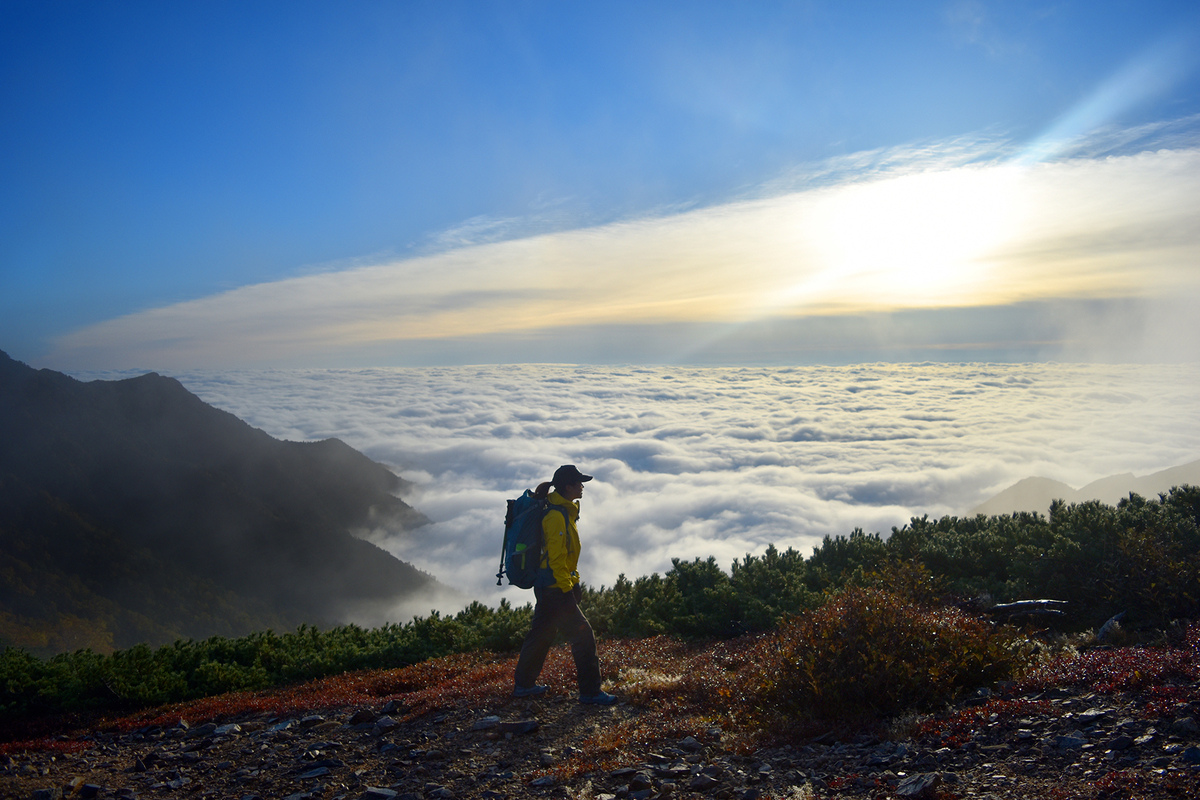
While the Alps are technically open year round, the most temperate months for enjoying the alpine terrain are July through October. From winter through early summer, the peaks are covered with snow and treacherous ice and only recommended for advanced hikers with the proper gear and experience.
The trails in the Northern Alps range from intermediate to advanced. Hikers are exposed to the elements on the ridges and the mountain weather can change drastically in a matter of minutes. Having said this, the Panorama Ginza is a recommended course for hikers looking for a stunning introduction to multi-day trekking in Japan. As its name suggests, this trail offers panoramic vistas of the Jonen mountain range and includes four major peaks, two of which are included in the “Hyaku-meizan” series, Japan’s 100 famous mountains. The trek can be done in four days with five to seven hours of walking per day between the mountain huts. Perhaps most enjoyable is the variety of terrain and wildlife that changes each day as you follow the trail During the short kouyou period between the last week of September to the beginning of October, the mountains turn into a patchwork of brilliant red, yellow and orange making for excellent landscape photography.
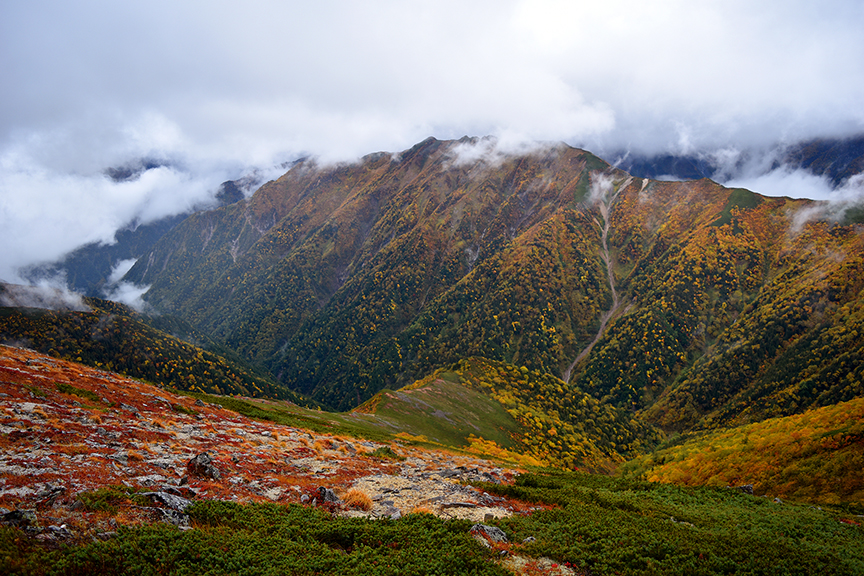
The key to hiking the Panorama Ginza is endurance and preparedness. Although the trail is well maintained, some people may find trekking for four days along undulating rocky terrain challenging. Be sure to bring proper rain wear and gear—getting caught on the trail when the weather takes a turn for the worst is no fun.
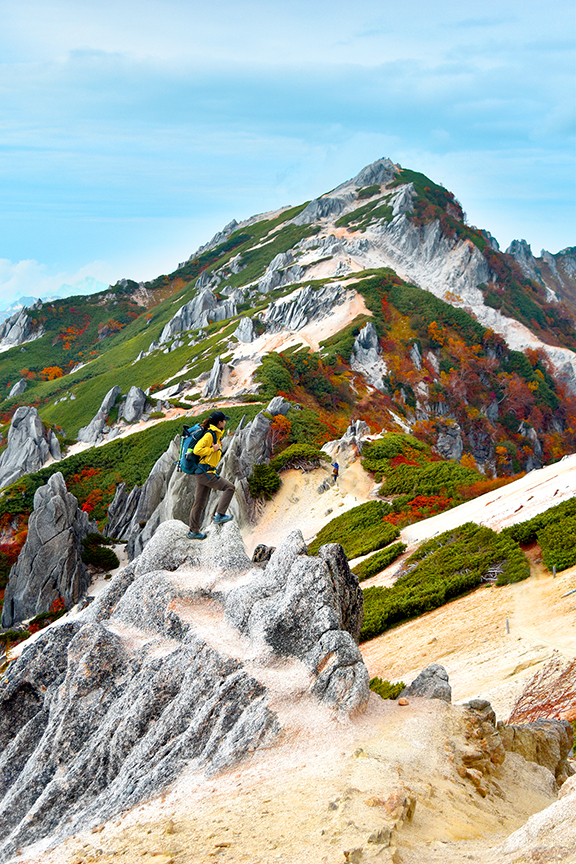
Start from Nakabusa Onsen trailhead (1,455 meters) which is a 40-minute drive from Hotaka Station. From there, you’ll be following the Kassen Ridge to Mt Tsubakuro (2,763 meters) The jolting contrast of green foliage dotted with alpine flowers and white granite sand makes this spot look like a fantasy film setting. Jagged boulders sticking out of the trail are eroded into strange shapes including the famous “Dolphin Rock ” On clear days you can see the iconic pointed peak of Mt Yari, Japan’s “Matterhorn.”
Just a 20-minute hike away is Enzanso Mountain Hut owned by the ebullient Kenji Akanuma. A third-generation owner, Akanuma is a landscape and wildlife photographer and holds informational sessions every evening (when he’s at the hut) to educate guests on mountain etiquette, practices and environmental issues He was also one of the people responsible for pushing for the national holiday of “Yama no Hi” (Mountain Day) to be celebrated August 11 instead of in June.
“If this national holiday had been in June and families with kids or inexperienced hikers were challenging themselves to climb the Alps when there’s still snow, it would have been extremely dangerous,” explains Akanuma. “So we all petitioned for Yama no Hi to be pushed to August during peak climbing season.”
After a good night’s sleep at the hut, depart for Mt. Otensho (2,922 meters), which is a three-hour hike from Enzanso. This portion is relatively at but there’s a short rocky passage midway that beginner rock climbers may want to try. If you time it right, you can reach Daitenso Mountain Hut by lunchtime before continuing another three hours down to Jonengoya Mountain Hut Keep an eye out for the raichō, literally meaning “thunder bird.” As the official bird of Nagano, this rock ptarmigan is protected nationwide. The rock ptarmigan is identified by its mottled black-and-white feathers but dons an almost complete white gown in the winter.
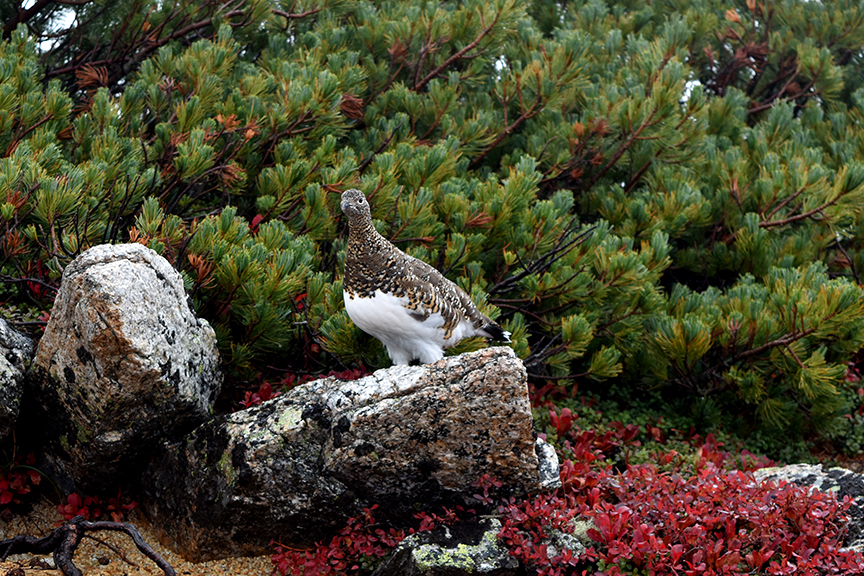
Jonengoya is located at the base of Mt. Jonen (2,857 meters). The next leg of this trip involves steep up and downhill scrambling over slippery boulders but possibly holds the most breathtaking view of the entire trek. This ridge sits between Kamikochi and the iconic Hotakadake Ridge and the city of Azumino. The mountains here are formed by glaciers similar to national parks on the U.S. West Coast; the landscape takes on a Pacific Northwest feel. Along the way you’ll see Byobu Iwa, the “El Capitan” of Japan where local rock climbers scale its 300-meter granite wall. You’ll climb three steep hills before arriving at the relatively level Mt. Chogatake (2,677 meters) and Chogatake Hutte. It’s advised to spend the night here before descending to the famous Kamikochi visitor area (a five-hour descent). Treat yourself to well-earned ice cream or a hot drink at the stylish Tokusawa-en Lodge, which is halfway on the route back.
Yamagoya Etiquette
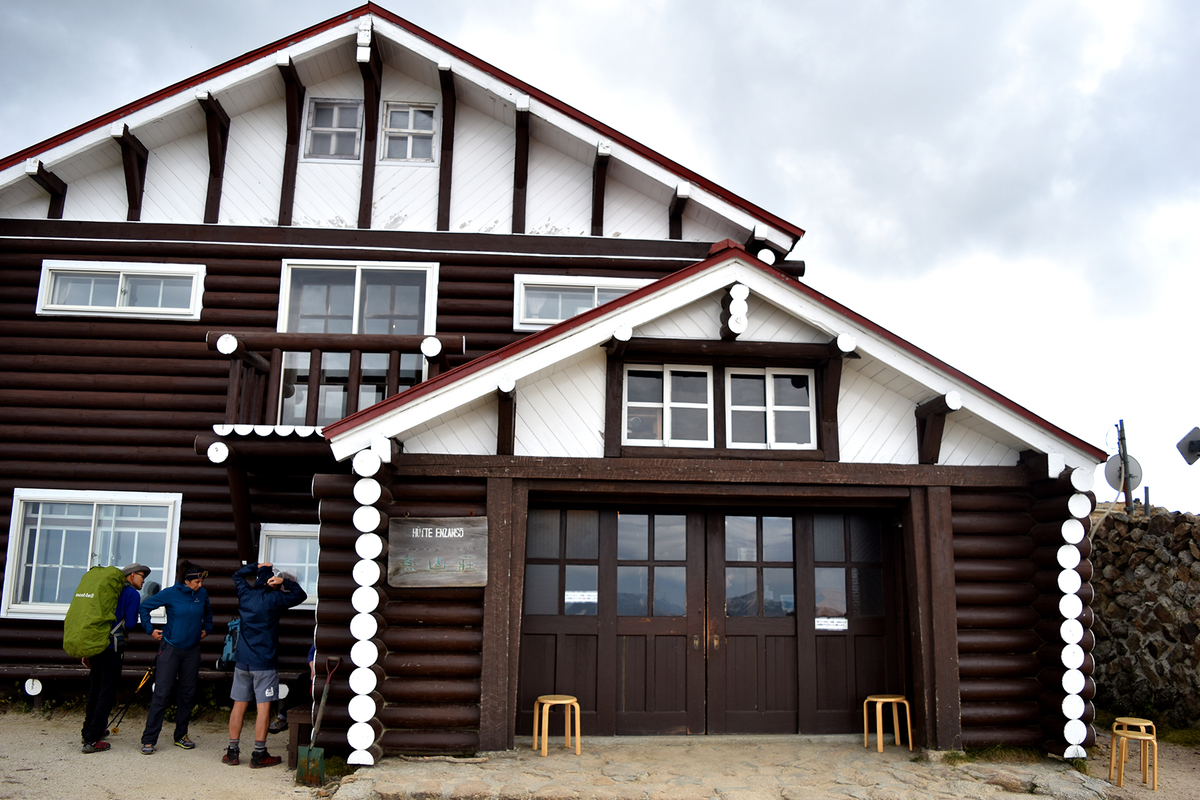
Hiking in Japan can be convenient because unlike most other mountain huts, yamagoya are built on peaks—or close to the peaks—so hikers without tents can avoid wasting time ascending and descending mid-hike to reach huts built on lower elevations. Japan’s huts prepare dinner, breakfast and packed lunch upon request and many have heated rooms, free drinking water and purchasable snacks and drinks. But the comfort ends there—after all, we’re talking about several mountain huts built on high elevations, where food and resources have to be helicoptered up. During peak climbing season and weekends, these huts get crowded especially since walk-ins are allowed. Rules change between huts but you should expect the following:
- You’ll be sleeping on futons in shared tatami mat rooms, and on crowded days don’t be surprised to find yourself sandwiched between other hikers.
- Mountain huts enforce a strict curfew. Usually lights are out by 9 p m and breakfast is served anytime between 5 to 6 a.m. Most hikers are usually out the door by 6:30 a.m. and check out is 8:30 a.m. at the latest.
- There are no showers, so bring body wipes.
- Some huts allow flushable toilet paper but most of the time, you’ll have to put your used toilet paper in the stall’s wastepaper basket.
- Most huts don’t allow toothpaste use as that may damage mountain soil.
- Bring back your own trash.
- Walk-ins are allowed, but you can also reserve via phone or email depending on the hut. Note that most hut owners and staff do not speak English.
- Hut prices can range anywhere from ¥7,000 to ¥10,000 for one night and two meals.
- Enzansou Mountain Hut
Open: Late April – Late November, Dec 31 and Jan 1 - Daitenso Mountain Hut
Open: Late June – Mid-October - Jonengoya Mountain Hut
Open: Late April – Early November - Chogatake Hutte Mountain Hut
Open: Late April – Late November
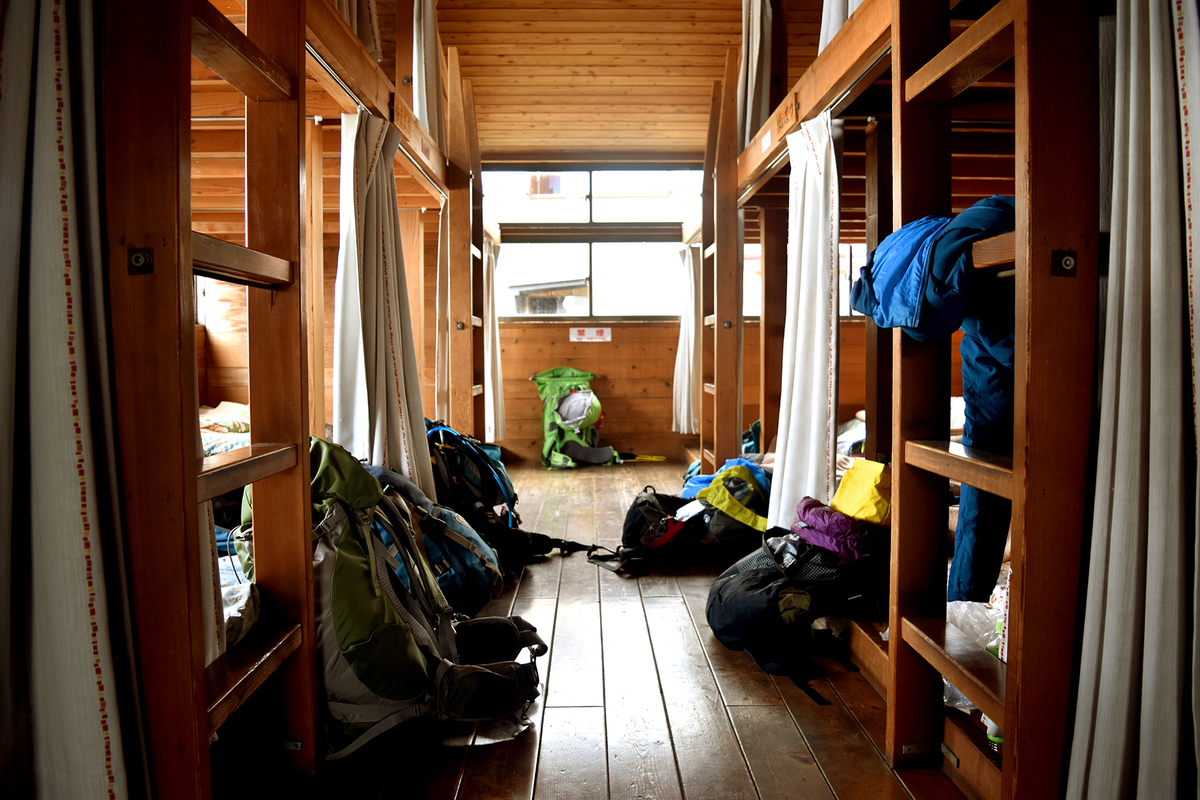
Getting There
If you’re coming by train from Tokyo, take the JR Chuo Line Limited Express direct to Hotaka Station in Azumino City. If you have a few days to spare, explore Azumino, which has several art museums, hot springs for day trippers and also Daio Wasabi Farm that produces some of the nation’s finest wasabi due to clean mountain meltwater.
Alternatively, you can start the hike from the opposite direction from Kamikochi, although it will be more crowded as it is also a gateway to Mt. Hotaka and popular campsites. To reach Kamikochi, you can take a direct bus from Matsumoto City. Buses do not run during snow season.
